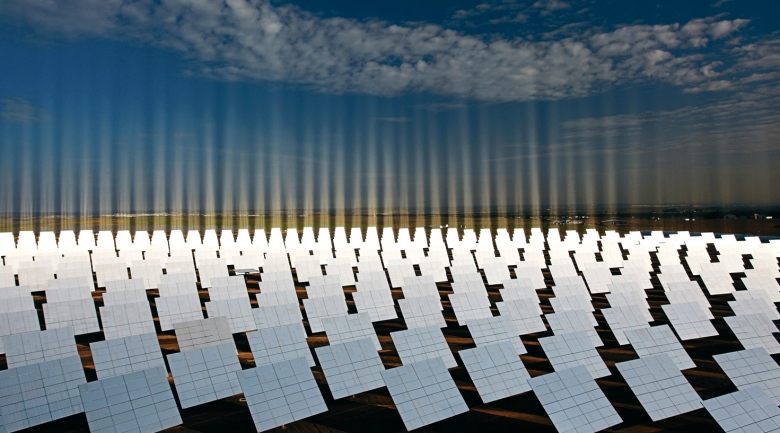
MIT researchers are opening a new avenue for improving solar cells, aiming to produce the thinnest and most lightweight solar panels possible.
Such panels, which have the potential to surpass any substance other than reactor-grade uranium in terms of energy produced per pound of material, could be made from stacked sheets of one-molecule-thick materials such as graphene or molybdenum disulfide.
Jeffrey Grossman, the Carl Richard Soderberg Associate Professor of Power Engineering at MIT, says the new approach “pushes towards the ultimate power conversion possible from a material” for solar power. Grossman is the senior author of a new paper describing this approach, published in the journal Nano Letters.
Although scientists have devoted considerable attention in recent years to the potential of two-dimensional materials such as graphene, Grossman says, there has been little study of their potential for solar applications. It turns out, he says, “they’re not only OK, but it’s amazing how well they do.”
Using two layers of such atom-thick materials, Grossman says, his team has predicted solar cells with 1 to 2 percent efficiency in converting sunlight to electricity, That’s low compared to the 15 to 20 percent efficiency of standard silicon solar cells, he says, but it’s achieved using material that is thousands of times thinner and lighter than tissue paper.
The two-layer solar cell is only 1 nanometer thick, while typical silicon solar cells can be hundreds of thousands of times that. Stacking several of these two-dimensional layers could boost the efficiency significantly.
For applications where weight is a crucial factor — such as in spacecraft, aviation or for use in remote areas of the developing world where transportation costs are significant — such lightweight cells could already have great potential, Bernardi says.
Pound for pound, he says, the new solar cells produce up to 1,000 times more power than conventional photovoltaics. At about one nanometer (billionth of a meter) in thickness, “It’s 20 to 50 times thinner than the thinnest solar cell that can be made today,” Grossman adds. “You couldn’t make a solar cell any thinner.”
